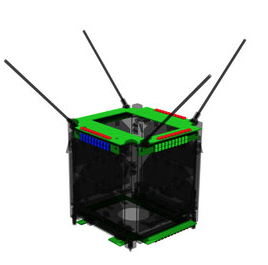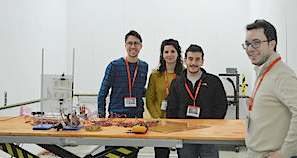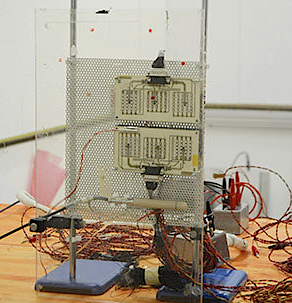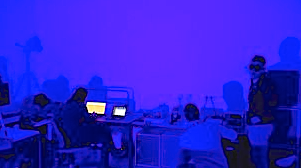These enthusiastic students developed a cubesat as members of ESA's Fly You Satellite! program, but they were uncertain that the tiny LED lights on the satellite used to conduct experiments might not tolerate the radiation in space. That led them on a journey ...

CAD image of LEDSAT
Sending a real satellite into space can be a dream come true for many students. ESA’s Fly Your Satellite! program offers the next generation of space scientists and engineers the chance to be supported by ESA specialists in this endeavour.
One group of students is from the Sapienza University of Rome. They are developing LEDSAT, a CubeSat that ingeniously uses tiny LED (Light Emitting Diodes) lights to test techniques for tracking satellites in Low Earth Orbit. To do this, LEDSAT is equipped with red, green, and blue LEDs fixed to its solar panels. This positioning is ideal for its experiments, but there’s a catch: once in orbit the LEDs will be fully exposed to radiation from space. Without Earth’s atmosphere to protect them, will the LEDs still function as needed? Or will they malfunction and give erroneous results?

The LEDSAT test team
A thorough test was needed, which is exactly what happened in December. The student team took their LEDs to ESTEC’s Cobalt-60 facility in Noordwijk, the Netherlands. The tests were conducted thanks to the support of the ESA Components Space Evaluation and Radiation Effects Section.
The students had already identified the Total Ionizing Dose (TID) radiation effect as a particular concern for their satellite: particles (such as electrons, protons, or photons) gradually deposit energy in the form of radiation inside components, which may lead to degradation and ultimately failure.

The LEDs set up, ready for Total Ionizing Dose tests
Fortunately, the Cobalt-60 facility is fully equipped to conduct these tests. LEDSAT’S LEDs were exposed to a Cobalt-60 source, which irradiated the tiny lights with gamma rays. This accurately simulated the effect of the radiation that will be encountered in space. What is more, in just a few days the LEDs were exposed to the amount of radiation they will face over years in orbit. The test was pushed up to a dose level above 30 krad(Si), well above what ESA specialists estimate LEDSAT will actually reach throughout its mission lifetime.
At each dosage the LEDs were carefully tested. Would their electrical parameters and power intensity be maintained? Or would the intense radiation affect the light emittance characteristics?
It can be reported that the LEDs passed this test with flying colors—red, green and blue, showing no signs of degradation, even under the highest doses of radiation!

The LEDSAT team measuring the light intensity of the blue LEDs
Paolo Marzioli, Systems Engineer of the LEDSAT Team and PhD student at the Sapienza University of Rome, was pleased with the result. "We are very happy to see that the LEDs were fine even after being exposed to a high radiation dose. It was an incredible opportunity to prepare and perform a real space qualification test at ESA and we have learned a lot from it. The test campaign has allowed us to improve our writing skills and our ability to tackle detailed test procedures—lessons learned that will help us for the next phases of the program and for the next tests that we will perform on the satellite."
The LEDSAT team has identified another type of radiation effect called Displacement Damage that could be hazardous. They are currently considering further tests to ensure that their satellite will survive this as well.

